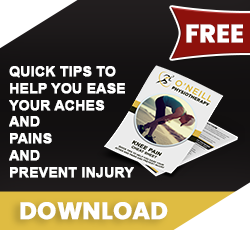Winter Safety Tips: How To Combat The Cold Snap This Winter
1. Dress for the Occasion
Important ways to keep safe and warm while being active:
Layering clothing preserves body heat. Long underwear, a fleece or wool sweater, a wind/water proof jacket are good options.
Avoid wearing cotton next to your skin. It absorbs sweat and stays wet.
Wear a hat – up to 40 per cent of body heat loss can occur through the head.
Wear gloves or mittens.
Wear a scarf to protect the chin, lips, and cheeks – all are extremely susceptible to cold weather injuries.
Bright colours or adding reflective material to clothing can help others see you better.
2. Put Your Best Foot Forward
For warmth and stability, look for the following when choosing a winter boot:
Well insulated and waterproof.
Light in weight.
A thick, non-slip tread sole; rubber or neoprene soles provide good traction on ice and snow.
A raised cross-hatched pattern on soles is ideal.
A wide and low heel.
The larger the area of contact between the shoe and the walking surface, the better.
3. Winter Safety Tips
Keep walkways and stairs cleared of snow and ice. This protects not just you and your family, but also postal or delivery workers in your local area.
Lighten your load. Carry fewer bags and packages on slippery days, since excess baggage can throw off your balance and make it tougher to regain your balance once you lose it. Avoid the lazy man’s load. We are all guilty of that!!
Drink warm fluids. Warm fluids can help keep you toasty, but avoid alcohol as it impairs your balance and your judgement.
Slow down! Better to get to your destination late than never, after all.
Do the “Shuffle” If there’s no other choice but to walk on that ice or snow, shuffle rather than stride. That means take baby steps. Move your feet apart a little bit, just a few inches, and bend the knees a little as you walk. It will create better stability and balance.
Go Sideways on Inclines; When walking up or down an incline that’s coated with ice or snow, turn sideways, then take a step with the foot that is leading, and bring the other foot alongside it. Continue this motion until you reach the top or bottom.
Focus, Focus Pay attention to surroundings and watch out for black, or invisible, ice and wet leaves. Exercise caution when exiting cars, buses and trains or when walking up and down outdoor stairs. The safest option: slow down and stop frequently to check the ground around you.
4. Fall safely
Sometimes accidents happen, even when we are careful. The key to preventing injury from a fall is to fall safely. Most injuries from slips and falls occur from throwing the arms out to break the fall or hitting the head or neck first. This can lead to breaks, fractures, back injuries and concussions.
If you start to feel yourself fall, fight the instinct to reach out. Instead, tuck and roll into the fall.
Keep your head tucked into your chest and hold your arms in at your side or chest. This will protect the back of your head from breaking the fall first and transfer the bulk of the impact into your shoulders and the sides of your arms.
If you do suffer a fall on ice, especially if you hit your head, neck or back, seek medical attention immediately. Concussions and spinal injuries are not always immediately recognizable right after a fall.
If you have had a fall and are feeling pain, we can help. Call us on 0861632611 or email info@oneillphysiotherapy.com and we’ll be able to advise you on what kind of treatment will be suitable for your problem.



